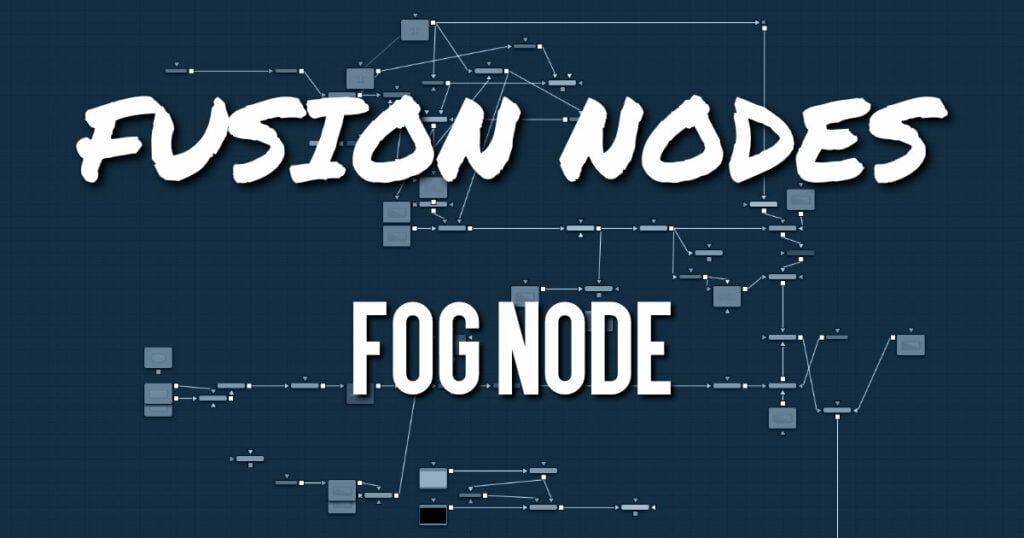Your cart is currently empty!
Fog Node

The Fog node is used to create simulated fog effects on 3D-rendered images that contain a valid Z-buffer channel. The fog can be placed in front of or behind various elements of a rendered image based on the selected Z-channel planes.
ADVERTISEMENT
Fog Node Inputs
The Fog node includes three inputs: one for the main image with a Z channel, one for a blur image, and another for an effect mask to limit the area where the depth blur is applied.
- Input: This orange input is the only required connection. It accepts a 2D image that includes a Z channel. The Z channel is used to determine the fog amount in different regions of the image.
- Blur Image: The green second image input connects an image that is used as the source of the fog. If no image is provided, the fog consists of a single color. Generally, a noise map of some sort is connected here.
- Effect Mask: The optional blue effect mask input accepts a mask shape created by polylines, basic primitive shapes, paint strokes, or bitmaps from other tools. Connecting a mask to this input limits the fog to only those pixels within the mask. An effects mask is applied to the tool after the tool is processed.
Fog Node Setup
The Fog node is typically placed after a Renderer 3D node. The Renderer 3D node must have Z-Depth enabled in its output channels.
ADVERTISEMENT
Fog Node Controls Tab
The Controls tab includes parameters for adjusting the density and color of the fog.
- Z-Buffer Near Plane and Far Plane
These controls are used to select the extents of the fog within the scene. To pick a value, drag the Pick button to an area on the image being viewed where the plane is to be located.
The Near Plane is used to select the depth where the fog thins out to nothing. The Far Plane is used to select the depth at which the fog becomes opaque. - Z Depth Scale
This option scales the Z-buffer values by the selected amount. Raising the value causes the distances in the Z-channel to expand, whereas lowering the value causes the distances to contract. This is useful for exaggerating the fog effect. - Fog Color
This option displays and controls the current fog color. Alpha adjusts the fog’s transparency value. - Fog Opacity
Use this control to adjust the opacity on all channels of the fog
Fog Node Settings Tab
The Settings tab in the Inspector is also duplicated in other Deep Pixel nodes. These common controls are described in detail HERE.
ADVERTISEMENT










